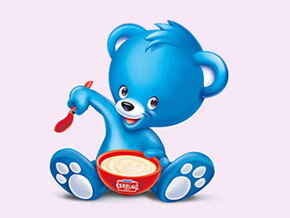
When and How to Introduce Solid and Weaning Foods To Babies?
The Complete Guide To Starting Solids and Weaning Foods
In general, babies display their readiness to try solid foods by the time they are 6 months old, as their ability to experience new textures and new tastes develops at this age, and their digestive systems become more apt to handle foods other than milk, according to the World Health Organization.
Prior to 6 months old, babies just don’t need solid foods, since the breast milk they get from constant nursing is full of the nutrients they need for their growth, and anything they lack is being given to them through supplements (Vitamin D since birth) and Iron (since month 4). And as stated by many experts and health professionals, month 6 is a great age to be introduced to solid foods especially that babies by this time show an increase need for nutrients they can’t get from exclusive breastfeeding.
It’s true that every baby is different from the other, but there are common signs to determine whether a child is ready for solid foods or not. Here are some signs of readiness to look for: Baby holding his head and controlling his neck, sitting upright, having interest in food and increasing 4 fold in weight through the first 4 months of life.
Now if you’re wondering about the types of foods you should be offering your child at the beginning of the weaning phase, be sure that there is no specific chronological order to follow, despite the fact that most of pediatricians recommend offering babies mashed grains and vegetables before introducing them to fruits and iron-rich meat.
As a start, choose to offer your baby mashed, boiled and pureed foods. As time goes by, the motor skills of your baby will develop. Then you can move gradually to more solid textures.
And every time you offer your baby a new food, wait a period of two to three days to make sure he gets used to the texture. Meanwhile, observe him closely to see if he will develop one of these food allergy symptoms: vomiting, rush and diarrhea.
Allow your child to enjoy his food and don’t worry about the quantity he eats, for eventually the greatest part of what you offer him will stuck in his head or spread on the floor.
Respect your child’s sense of taste and food preferences. And in case he didn’t like a particular type of solids, don’t force him to eat it. But if you think it’s an important nutrition for his body, just wait a whole week before you offer it to him once again.
When your child is able to sit by himself, pick up food and approach it to his mouth, serve him soft finger foods that he can easily swallow and not choke on them, like bananas, scrambled eggs and pasta.
Introducing your baby to solid foods could be a fun stage for your little one and a total chaos for you. But it is surely an important phase in your child’s development and concrete evidence that he’s growing and changing.
And once your child expresses his desire to eat the way you do, that means he’s getting ready to share this activity with the family. Just be there for him!
Read More: Food Allergy In Babies And Children




















